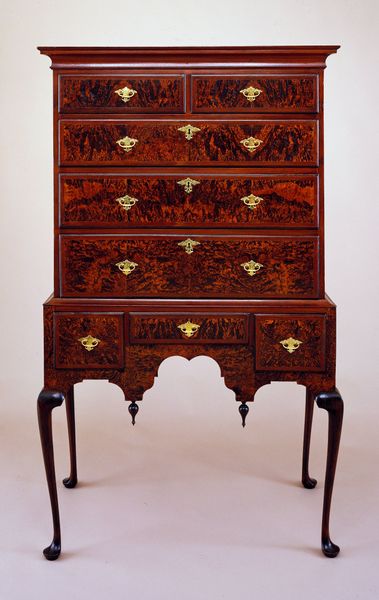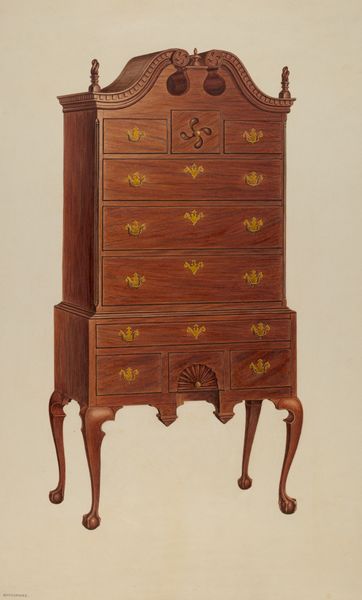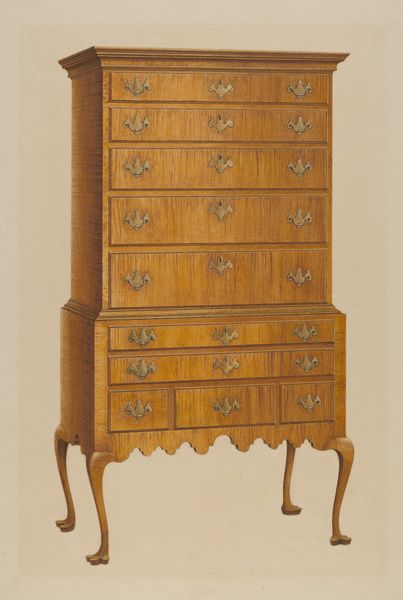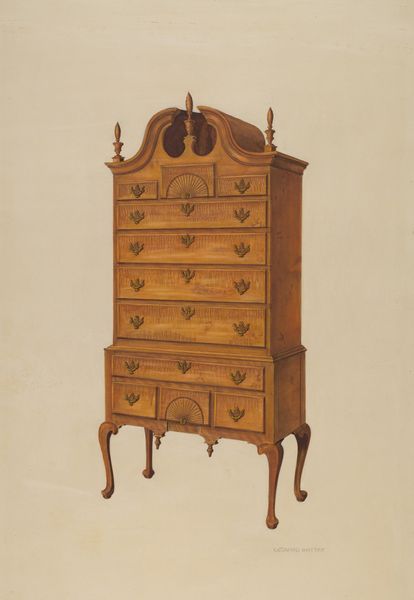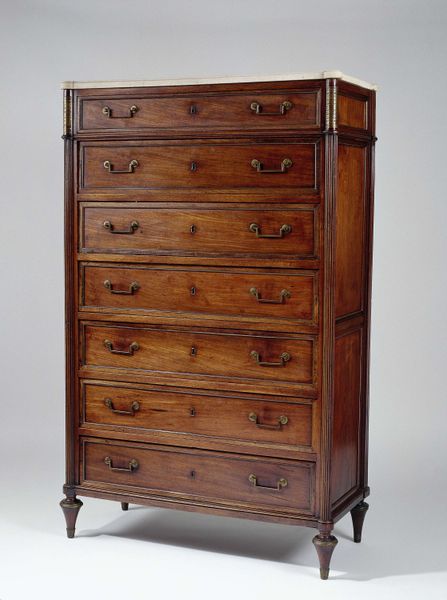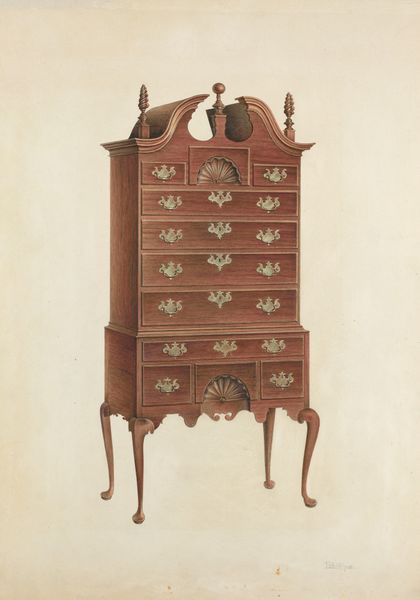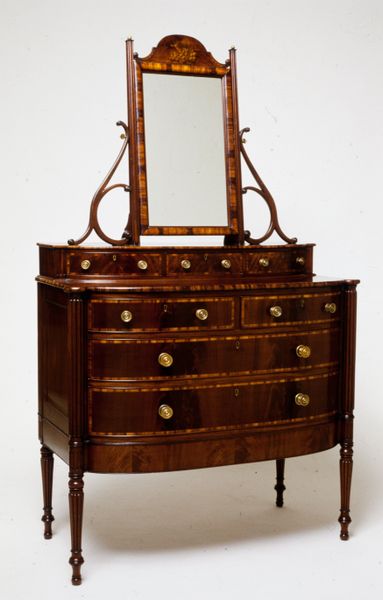
wood
#
portrait
#
baroque
#
furniture
#
wood
#
decorative-art
Dimensions: 76 1/2 x 37 1/4 x 9 1/2 in. (194.31 x 94.62 x 24.13 cm)
Copyright: Public Domain
Editor: Here we have the "Chest of Drawers," made around 1755, and attributed to Eliakim Smith. It’s crafted from wood, and it strikes me as very imposing, with a rigid symmetry softened only slightly by the curved legs. What are your initial observations about its design? Curator: Observe how the maker manipulates positive and negative space. The solid planes of the drawers are punctuated by the delicate brass hardware, which introduces a contrasting texture. Consider the interplay between the verticality of the piece as a whole and the subtle curves of the cabriole legs and broken pediment. This is classic baroque restraint expressed materially. What effect does this layering achieve in your opinion? Editor: I think it brings a sense of ordered grandeur, the details softening what could otherwise be overwhelming. The repetition of the shell motif seems to reinforce that feeling of balanced harmony. Curator: Precisely. The repetition of that radiating motif introduces a rhythm. Notice too how the choice of wood grain directs our eye. Do you agree the linear patterns encourage us to travel upward along the form? Editor: Yes, the wood grain and the stacking of the drawers definitely draw the eye upwards, reinforcing the height. So it’s not just about utility; it's designed to be admired, to convey a sense of status and refinement through its structure. Curator: And the formal elements. The quality of construction, the meticulous detail of carvings, contribute to that end. There’s an articulation of form, line and volume we can trace through this entire piece. This, indeed, achieves an aesthetic end of considerable quality. Editor: I now have a far better sense of what this aesthetic and structural approach truly involves! Thanks! Curator: An incisive perspective, indeed. It enriches the visual perception of this item.
Comments
minneapolisinstituteofart almost 2 years ago
⋮
Eliakim Smith was one of the most skilled cabinetmakers in the rural Connecticut River Valley of western Massachusetts. A variety of furniture forms, including chests-on-chests, desks-and-bookcases, and high chests of drawers were made by Smith or those that worked in his shop. The objects have histories in Hadley, Northampton, and other towns around Springfield, Massachusetts. While it is unknown where Smith trained, he adopted the more urban Boston traditions of craftsmanship, as seen here in the stylized flame finials and molded drawer sides.
Join the conversation
Join millions of artists and users on Artera today and experience the ultimate creative platform.
